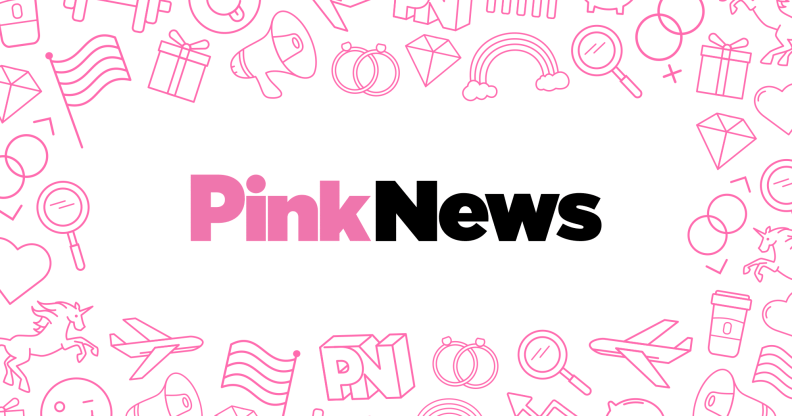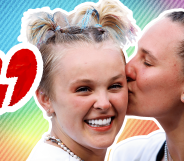Interview: Henry Badenhorst, the Gaydar guy

Henry Badenhorst is arguably one of Britain’s most influential gay men. The source of his influence comes from his ownership of Gaydar, the online dating platform he co-founded, which boasts more than six million subscribers worldwide. In a rare interview I meet with him to discuss the company’s story and his plans for the future.
Badenhorst was born and grew up in South Africa. He and his then partner, Gary Frisch, moved to Britain in 1997 when he was 31 to work on an IT contract.
“Apartheid had just ended and efforts had to be made to reverse its effects. The shipping company I worked for put a moratorium on white male promotion so newly trained black men and women could take up management positions for the first time. Effectively I was told I wouldn’t progress any further.”
“At the same time Gary had just reached the end of a two-year lock-in period with a company he started and then sold. It made our decision to move to London so much easier when the opportunity arose.”
Having arrived in London they found it difficult to make friends. They were a couple and not really into the pub and club scene. Why didn’t an easier way to connect with people exist?
Badenhorst says: “Then a Dutch friend of ours came out of a 12-year relationship and told us he needed an easier way to find a boyfriend. He lived out in Reigate and spent most of his time running his business. We suggested he use the internet and we helped him register on Excite Personals.”
At that time, internet dating was still in its infancy and predominantly email-based. When it took two weeks just to register their friend they felt certain they could provide a better service. Gary started programming, Henry came up with some designs and by November they’d launched the first version of Gaydar more or less as a hobby.
When the IT contract that brought them to Britain ended, Badenhorst took the hobby on full-time.
“In the early days we really struggled,” he says. “We tried to raise some funding, but it didn’t happen. People didn’t believe what we believed in. We thought this was great, service to the community. I remember taking out credit cards to pay for advertising and then taking out more credit cards to pay off the first ones.”
In 1999 the internet was still very new to many. Gay men might be early adopters of new technologies, but they don’t do so all at once, overnight.
“We took the decision to host our own server although we knew very little about hardware. We had limits on the number of people we could accommodate otherwise it would just crash. I remember Gary’s mother and father coming to visit and sitting them down in front of the computer and telling them: ‘While you’re here, if this graph goes too high pull out this plug and put that one in’.”
When Gaydar introduced paid-for memberships it was criticised by those who believed, wrongly, people wouldn’t pay for such a service. They did and the company grew further.
“Initially the banks didn’t want our merchant account because of what they saw as reputational risk. They weren’t comfortable with online dating businesses and that fact that we were ‘gay’ made it worse. These days their attitude is very different.
“Then in 2002 we sponsored one of the Pride events. We had a massive Gaydar-branded marquee filled with computer terminals in the middle of Hackney Marshes. That was the day Gary and I stood back and realised what we’d created. There were hundreds of people, some of them wearing homemade t-shirts with their profile name on. It was incredible.”
Gaydar ballooned on the back of its profile-centric offering. Eventually the company outgrew Henry and Gary’s home, moving into the office block that today also houses Gaydar Radio.
Gaydar Radio came about when it became apparent how long users were spending logged on. Initially Henry and Gary thought they would just provide music for users to listen to. In time that morphed into a fully-fledged radio station.
“For me Gaydar Radio is a fantastic platform for the gay community since it provides a strong voice for LGBT issues. At the same time it provides large brands an opportunity to reach a highly sought after demographic.”
The Gaydar story took an unexpectedly sad turn in 2007 when Frisch died in a drug-related misadventure. He and Badenhorst had only ended their personal relationship a few months prior to the accident.
“When Gary passed away it had a massive effect on me,” he says. “Other things went wrong just after as well. There was a lawsuit… It was an awful time. When I eventually came out of all that I wasn’t on top of my game. Thankfully I had a great team around me that held things together.”
While Gaydar is hugely popular in the UK, South Africa and Australia, the service hasn’t replicated that success in America. Gaydar initially entered the US market via a partner, but with mixed results.
“It didn’t quite work out how we wanted it to. Now the US market looks odd to me. One of the biggest sites is completely free because they run an advertising model. I’m sure they make some revenue, but I can’t imagine it’s nearly enough to sustain them.”
I want to discuss some of the criticisms levelled at Gaydar, but before I do I lay my cards on the table. Two and a half years ago, I met my boyfriend on Gaydar and we’ve been together ever since. Furthermore, I’ve found Gaydar a great way to make friends when I find myself in a new city or country. As such I’m living proof that Gaydar does what it set out to do. Nevertheless, some argue the site encourages unsafe sex and promiscuity.
“It comes down to the way gay people behave,” Henry sighs. He’s heard the question countless times before. “Some gay men are highly sexual. The key is how you facilitate those needs. Previously guys would go to cruising grounds, which was terribly unsafe. Online, people can make informed decisions and you have the ability to educate them on sexual health.”
“At the end of the day Gaydar is a service for people to use as they want, hence the strap line: what you want, when you want it.”
Looking ahead Badenhorst is contemplating becoming involved with London’s annual Pride event, which he thinks pales in comparison to similar events held by Sydney and Brighton.
“I’d love to see a big Pride parade in London, really supported by the Mayor’s office and local communities. We did Soho pride two years ago and it went really well. We got sponsorship, everyone got paid and it was a great event. Having dipped our toes in the water I know we could organise a great event.”
For me, Badenhorst’s success with Gaydar is on par with the great technology stories of our time. The fact that Gaydar is a business that empowers and supports the gay community makes it even better.

